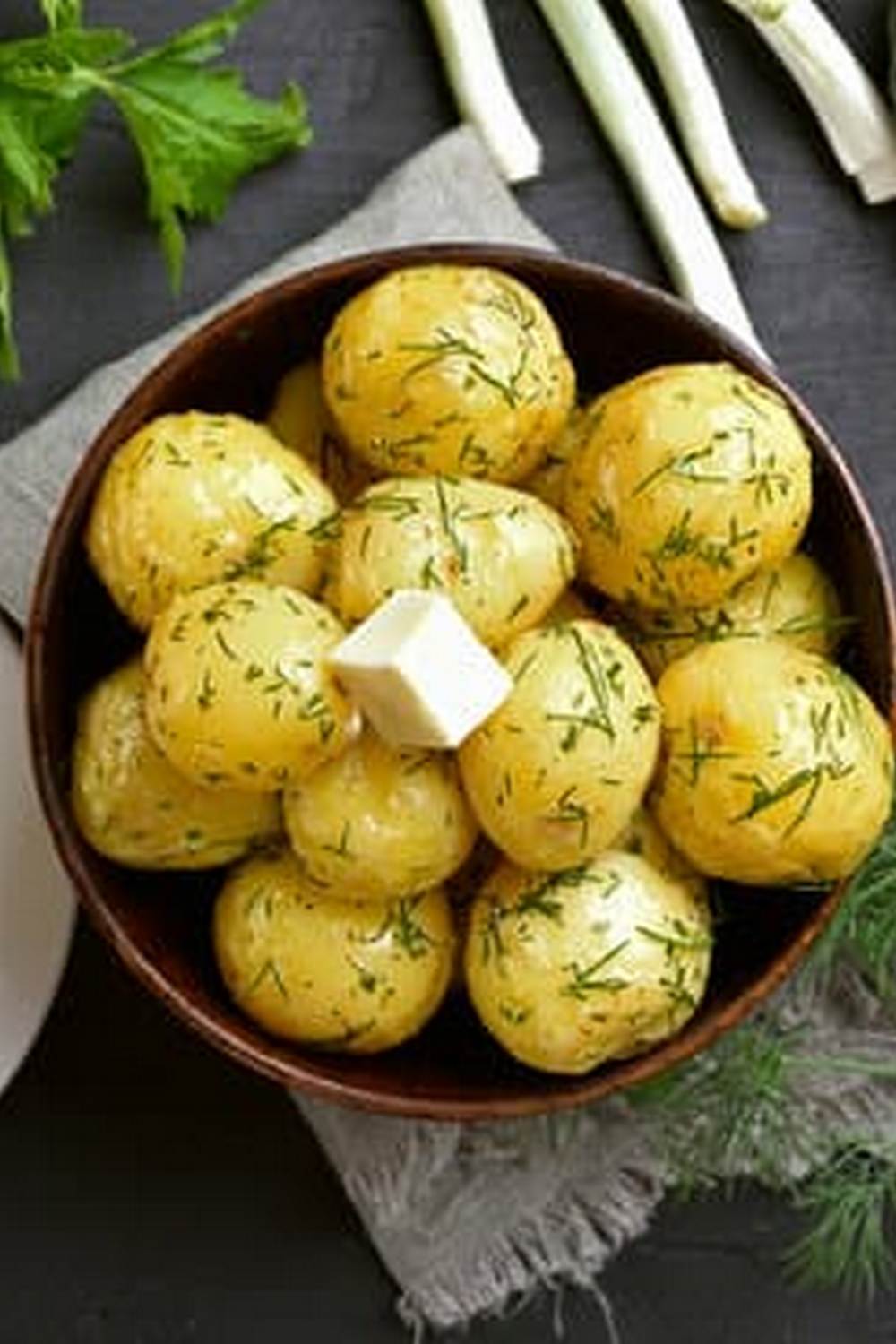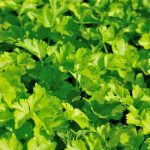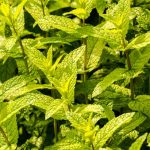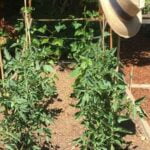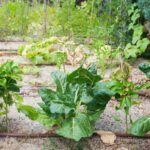Are you looking to start a vegetable garden in the Texas Panhandle? Vegetable gardening in Texas Panhandle can be a rewarding and fruitful activity, allowing you to enjoy fresh, homegrown produce.
The region’s unique climate and soil conditions present both opportunities and challenges for aspiring gardeners. In this article, we will explore the ins and outs of vegetable gardening in the Texas Panhandle, including the best vegetables to grow, tips for starting a garden, watering and irrigation techniques, pest and disease management, and community resources for support.
The Texas Panhandle is known for its semi-arid climate with hot summers and cold winters. The region also has alkaline soil with low organic matter content. These environmental factors can impact the types of vegetables that thrive in the area, as well as the methods needed to care for them. Understanding these conditions is crucial for successful vegetable gardening in Texas Panhandle.
In this comprehensive guide, we will provide valuable insights into how to navigate these challenges and create a flourishing vegetable garden in the Texas Panhandle. Whether you’re a seasoned gardener or just starting out, this article is designed to equip you with the knowledge and resources needed to grow your own bountiful vegetable garden in this unique region.
So let’s dig deeper into vegetable gardening in the Texas Panhandle and explore everything you need to know to get started.
Climate and Soil Conditions in Texas Panhandle
The Texas Panhandle experiences a semi-arid climate, characterized by hot summers and cold winters. The region receives low annual precipitation, making water conservation and efficient irrigation techniques essential for successful vegetable gardening. Additionally, the soil in the Texas Panhandle is typically alkaline and sandy, presenting some challenges for plant growth. However, with proper soil amendments and management, vegetable gardeners can still achieve bountiful harvests.
Climate Patterns
The Texas Panhandle is known for its wide temperature fluctuations throughout the year. Summers can be extremely hot, with temperatures frequently reaching over 100 degrees Fahrenheit, while winter lows can drop below freezing. This unique climate pattern requires gardeners to select vegetable varieties that are well-adapted to such extreme temperature changes.
Soil Conditions
The alkaline and sandy soil in the Texas Panhandle poses some difficulties for vegetable gardening. These soil conditions may lead to poor nutrient retention and drainage issues. Gardeners are encouraged to conduct soil tests to determine pH levels and nutrient deficiencies before planting their crops. Adding organic matter such as compost or well-rotted manure can help improve soil structure and fertility for optimal plant growth.
Adapting to the Climate and Soil
Despite the challenging climate and soil conditions in the Texas Panhandle, there are several strategies that vegetable gardeners can implement to maximize their success. Selecting heat-tolerant and drought-resistant vegetable varieties, practicing mulching to conserve soil moisture, and utilizing raised bed or container gardening techniques are all effective ways to adapt to the unique conditions of the region.
By understanding and working with the climate and soil of the Texas Panhandle, vegetable gardeners can still enjoy an abundant harvest of fresh produce.
Best Vegetables to Grow in Texas Panhandle
When it comes to vegetable gardening in the Texas Panhandle, it is essential to choose the right vegetables that can thrive in this unique climate and soil conditions. The region experiences hot summers, cold winters, and low precipitation, making it challenging for many plants to grow. However, with careful selection and proper care, there are several vegetables that can thrive in this environment.
Warm-Season Vegetables
In the Texas Panhandle, warm-season vegetables that do well include tomatoes, peppers, squash, cucumbers, and okra. These vegetables require plenty of sunlight and well-drained soil. Planting them after the last frost date in a location with good air circulation can help them flourish despite the hot temperatures.
Cool-Season Vegetables
Cool-season vegetables like lettuce, spinach, kale, carrots, and radishes are well-suited for the Texas Panhandle’s cooler months. These vegetables can withstand light frosts and prefer cooler temperatures for optimal growth. Planting them in late winter or early spring allows them to mature before the heat of summer sets in.
Drought-Resistant Vegetables
Given the low precipitation levels in the Texas Panhandle, choosing drought-resistant vegetables is crucial for successful gardening. Drought-tolerant options include sweet potatoes, black-eyed peas, and various herbs such as rosemary and thyme. These plants have adapted to survive in arid conditions and require minimal water once established.
In addition to these vegetable options, it is important for gardeners to consider using mulch to conserve moisture and reduce watering needs. By selecting the right mix of warm-season, cool-season, and drought-resistant vegetables, gardeners can enjoy a bountiful harvest despite the challenges of vegetable gardening in Texas Panhandle.
Tips for Starting a Vegetable Garden in Texas Panhandle
When starting a vegetable garden in the Texas Panhandle, it’s important to consider the unique climate and soil conditions of the region. The first step is to choose a location with plenty of sunlight and well-draining soil. It’s also essential to consider wind exposure, as the Texas Panhandle is known for its strong winds.
Once you have selected a suitable location for your vegetable garden, it’s time to prepare the soil. In the Texas Panhandle, the soil tends to be alkaline and may require amendments such as compost or organic matter to improve its fertility. Conducting a soil test can help determine any specific nutrient deficiencies that need to be addressed before planting.
When it comes to choosing which vegetables to grow in your Texas Panhandle garden, it’s best to select varieties that are well-suited to the region’s climate. Heat-tolerant vegetables like tomatoes, peppers, squash, and okra thrive in the warm summers of the Texas Panhandle. Additionally, cold-hardy crops such as carrots, beets, and leafy greens can be grown during the cooler months.
In addition to selecting appropriate vegetables for your garden, it’s important to plan for regular watering and irrigation. The Texas Panhandle has a semi-arid climate with hot, dry summers, making it crucial to provide consistent moisture for your vegetable plants. Drip irrigation systems or soaker hoses are effective methods for delivering water directly to the root zone while minimizing evaporation. Incorporating mulch around plants can also help conserve moisture in the soil.
Challenges of Vegetable Gardening in Texas Panhandle
Vegetable gardening in the Texas Panhandle comes with its fair share of challenges, but with proper planning and techniques, you can overcome them and have a successful garden. Here are some common challenges you may face when vegetable gardening in this region:
1. Extreme temperatures: The Texas Panhandle is known for its hot and dry summers, as well as cold winters. It’s important to choose vegetable varieties that are well-adapted to these temperature extremes. Some vegetables that thrive in the Texas Panhandle climate include tomatoes, peppers, squash, and okra.
2. Soil quality: The soil in the Texas Panhandle is often sandy and alkaline, which can pose a challenge for vegetable gardening. To improve soil quality, consider adding organic matter such as compost or manure to increase fertility and water retention.
3. Water availability: Water scarcity is a major challenge for vegetable gardening in the Texas Panhandle. With limited rainfall and high evaporation rates, it’s crucial to implement efficient watering techniques such as drip irrigation or soaker hoses. Collecting rainwater in barrels can also help supplement irrigation during dry periods.
Despite these challenges, many enthusiastic gardeners have found success by adapting their practices to suit the unique conditions of the Texas Panhandle. By choosing the right vegetables, improving soil quality, and implementing efficient watering techniques, you can enjoy a bountiful harvest from your vegetable garden in this region.
Watering and Irrigation Techniques for Texas Panhandle Vegetable Gardens
The Texas Panhandle presents unique challenges when it comes to vegetable gardening, particularly when it comes to watering and irrigation. The region is known for its hot, dry climate with low average rainfall, making it essential for gardeners to have effective watering and irrigation techniques in place.
Given the arid conditions of the Texas Panhandle, drip irrigation is often recommended as the most efficient method for vegetable gardening. This system delivers water directly to the base of plants, reducing evaporation and water waste. Additionally, mulching around plants can help retain soil moisture and reduce the need for frequent watering.
It’s also important for gardeners in the Texas Panhandle to be mindful of water conservation. Implementing rainwater collection systems can provide a sustainable source of water for vegetable gardens, especially during times of drought. By utilizing techniques such as drip irrigation, mulching, and rainwater collection, gardeners can overcome the challenges of vegetable gardening in the Texas Panhandle while conserving water resources.
| Watering and Irrigation Techniques | Benefits |
|---|---|
| Drip Irrigation | Reduces evaporation and water waste |
| Mulching | Retains soil moisture |
| Rainwater Collection | Sustainable water source during drought |
Pest and Disease Management for Texas Panhandle Vegetable Gardens
When it comes to vegetable gardening in the Texas Panhandle, dealing with pests and diseases is an inevitable part of the process. However, with proper management and preventive measures, gardeners can minimize the impact of these issues on their crops. One of the most common pests in this region is the aphid, which can be controlled through natural predators like ladybugs or by using insecticidal soap.
Another common issue for vegetable gardens in the Texas Panhandle is fungal diseases, especially during periods of high humidity. To prevent and manage these diseases, it’s important to practice good sanitation by removing any infected plant debris and providing adequate air circulation between plants. Additionally, choosing disease-resistant varieties and avoiding overhead watering can help reduce the risk of fungal infections.
It’s also essential for gardeners in the Texas Panhandle to regularly monitor their plants for any signs of pest infestations or disease development. Early detection allows for prompt action, whether it’s through organic remedies or seeking professional advice. By staying vigilant and implementing integrated pest management strategies, vegetable gardeners in the Texas Panhandle can maintain healthy crops despite potential challenges.
| Tips | Details |
|---|---|
| Monitor regularly | Inspect plants for signs of pests or diseases at least once a week |
| Natural predators | Encourage beneficial insects like ladybugs to control aphid populations |
| Sanitation practices | Remove any infected plant debris and provide adequate air circulation between plants to minimize fungal disease risk |
Community Resources and Support for Texas Panhandle Vegetable Gardeners
When it comes to vegetable gardening in the Texas Panhandle, community resources and support can be invaluable. One of the best ways to connect with other gardeners in the area is through local gardening clubs or community gardens. These groups often provide a wealth of knowledge and experience that can help beginners get started and offer ongoing support for more experienced gardeners. Additionally, they may organize events, workshops, and seed exchanges, providing opportunities for learning and networking.
Another valuable resource for Texas Panhandle vegetable gardeners is the county extension office. They can provide valuable information on soil testing, pest management, and specific recommendations for vegetable varieties that thrive in the region’s unique climate and soil conditions. Extension offices also often offer educational programs and workshops specifically tailored to local gardeners’ needs.
Furthermore, many Texas Panhandle communities have farmers’ markets where local growers can sell their produce. This provides an opportunity not only to purchase fresh, locally grown vegetables but also to connect with the people who are successfully growing them in the same region. Building relationships with these producers can lead to mentorship opportunities and support networks within the local vegetable gardening community.
Overall, tapping into community resources and support systems can greatly enhance the vegetable gardening experience in the Texas Panhandle. Whether it’s through joining a gardening club, utilizing extension office services, or connecting with local growers at farmers’ markets, there are plenty of opportunities to learn from others and build a supportive network within the vegetable gardening community.
Conclusion and Resources for Further Information on Vegetable Gardening in Texas Panhandle
In conclusion, vegetable gardening in the Texas Panhandle comes with its own set of challenges, but with the right knowledge and resources, it can be a rewarding and successful endeavor. The unique climate and soil conditions in this region require careful consideration when choosing which vegetables to grow and how to care for them.
By selecting the best vegetables suited for the Texas Panhandle, implementing proper watering and irrigation techniques, and effectively managing pests and diseases, gardeners can increase their chances of a bountiful harvest.
One key resource for vegetable gardeners in the Texas Panhandle is the local agricultural extension office, which provides valuable information on planting schedules, soil testing, pest management, and more. Additionally, joining a community gardening group or seeking out support from experienced gardeners can provide insight and assistance in navigating the specific challenges of vegetable gardening in this region.
By tapping into these resources, beginners and seasoned gardeners alike can learn from others’ experiences and gain access to helpful tips and techniques for success.
For further information on vegetable gardening in the Texas Panhandle, individuals can explore online resources such as gardening blogs, university extension websites, and forums dedicated to regional gardening. These sources offer a wealth of knowledge on topics ranging from selecting the best varieties for the area to troubleshooting common issues that arise in Texas Panhandle vegetable gardens.
With a willingness to learn and adapt to the unique demands of this region’s climate and soil conditions, gardeners can enjoy a thriving vegetable garden that yields an abundance of fresh produce throughout the growing season.
Frequently Asked Questions
What Vegetables Grow Best in North Texas?
Vegetables that grow best in North Texas include tomatoes, peppers, squash, cucumbers, and green beans. These vegetables thrive in the warm temperatures and well-drained soil common in the region.
When Should I Start a Vegetable Garden in Texas?
The best time to start a vegetable garden in Texas is during the spring months, typically around late February to early March. This gives the plants enough time to develop before the intense heat of summer arrives.
What Hardiness Zone Is Texas Panhandle?
The Texas Panhandle is classified under hardiness zones 6 and 7, with zone 6 encompassing most of the area. This means that gardeners should look for plants that are well-suited for these cooler temperature zones, such as cold-hardy vegetables like carrots, beets, and lettuce.

If you’re looking to get into vegetable gardening, or are just looking for some tips on how to make your current garden better, then you’ve come to the right place! My name is Ethel and I have been gardening for years. In this blog, I’m going to share with you some of my best tips on how to create a successful vegetable garden.

